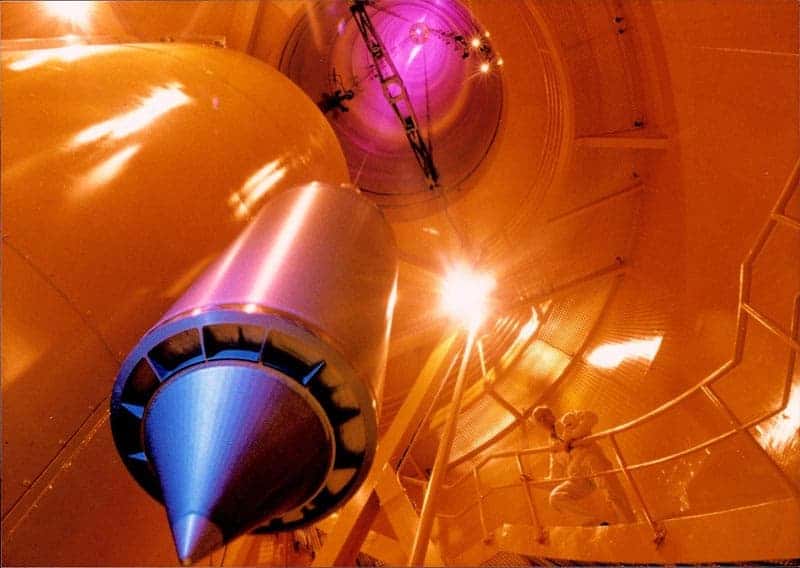In the ever-evolving landscape of quantum physics, the advent of Bose-Einstein condensates (BECs) marked a pivotal moment—an intersection where the macroscopic and microscopic worlds coalesce into a unique state of matter. This article explores the compelling phenomenon of condensates created in freefall, illustrating how this intricate process not only offers insights into the quantum realm but also beckons a transformative shift in our understanding of matter and energy.
To grasp the significance of condensates in freefall, it is essential first to understand the foundational principles of Bose-Einstein condensation itself. Predicted by Satyendra Nath Bose and Albert Einstein in the early 20th century, BECs represent a state in which a group of bosons is cooled to temperatures near absolute zero, causing them to occupy the same quantum state. This results in a collective behavior that defies classical mechanics, allowing a macroscopic wave function to dominate the ensemble. In simpler terms, under these extreme conditions, particles demonstrate quantum effects on a scale observable to the naked eye.
In the traditional laboratory setting, achieving the ultra-low temperatures necessary for creating BECs typically involves intricate cooling techniques, such as laser cooling and evaporative cooling. However, recent advancements in experimental physics have enabled scientists to explore novel methods to create BECs, particularly in microgravity environments. Freefall experiments, particularly those conducted aboard parabolic flights or in orbit, provide a unique backdrop wherein the interference of gravitational forces can be buffered, allowing researchers to scrutinize quantum phenomena without the dominant influence of gravity.
The central premise behind creating a condensate in freefall hinges on the idea of symmetry breaking and the behavior of atomic particles in a microgravity environment. When atoms are allowed to fall freely, they experience conditions akin to those that would traditionally require extensive cooling techniques. This phenomenon prompts a re-evaluation of how we understand temperature and phase transitions, showcasing that quantum states may emerge under unconventional circumstances. In a sense, freefall epitomizes the marriage of gravity and quantum mechanics—a union that has long been absent in theoretical frameworks.
Exploratory experiments have demonstrated that as atoms undergo freefall, their internal interactions dynamically evolve, potentially leading to the formation of a Bose-Einstein condensate. The absence of gravitational interference allows for unmitigated collision interactions among particles, thus accelerating the transition into this exotic state of matter. Such experiments have not only yielded condensates but have also allowed researchers to engage with intriguing questions concerning the nature of quantum coherence, thermalization processes, and the fundamental underpinnings of particle behavior.
In understanding the implications of these freefall condensates, one must consider the potential applications that arise from this research. For instance, the creation of BECs in microgravity opens avenues for novel quantum technologies. The potential integration of BECs into quantum computing systems, for example, could revolutionize how information is processed. Quantum bits (qubits) could leverage the unique properties of the condensate to facilitate faster and more efficient methodologies for data processing and storage. Furthermore, the insights gained from observing BECs in freefall may aid in refining our understanding of quantum phenomena such as entanglement and superfluidity, which play crucial roles in next-generation quantum devices.
Moreover, investigating condensates formed in microgravity invites philosophical queries regarding our understanding of existence. As scientists delve into the fabric of reality, freefall experiments serve as a reminder that our grasp on fundamental forces is still burgeoning. The juxtaposition of gravitational fields with quantum states challenges preconceived notions, inviting a paradigm shift that shifts our comprehension of how we perceive and interact with the universe.
Nonetheless, challenges remain in terms of experimental accuracy and reproducibility. The intricate apparatus required to maintain the state of the condensate during freefall demands precision; variations in environmental conditions can introduce unpredictable variables. Researchers are urgently working to refine methodologies to mitigate these issues, ensuring that the knowledge gleaned from freefall experiments can be trusted and applied to broader quantum inquiries.
As the journey into the quantum drip of zero-G continues, the intermingling of various academic disciplines—ranging from physics to philosophy—becomes increasingly pronounced. Understanding the nature of BECs formed in microgravity will not merely augment our knowledge of quantum mechanics but could also redefine the notions of temporal and spatial boundaries. Questions arise: What unforeseen consequences will the exploration of these condensates yield for theoretical physics? Could these insights extend beyond inert systems to inform biological systems and even the fundamental qualities of consciousness?
In conclusion, the engagement with quantum drip phenomena in freefall signifies a refreshing paradigm shift—a return to the core inquiries about the nature of existence. As researchers exploit the myriad opportunities afforded by microgravity, the forthcoming discoveries promise to unveil segments of the cosmos that have remained obscured beneath the veil of classical understanding. Indeed, the intersection of quantum mechanics and gravity remains an enigmatic terrain, where each revelation births further inquiry, inviting scholars to probe deeper into the very essence of reality. Such exploration ensures that the academic community remains steadfast in its pursuit of knowledge, forging pathways to unprecedented understanding.








